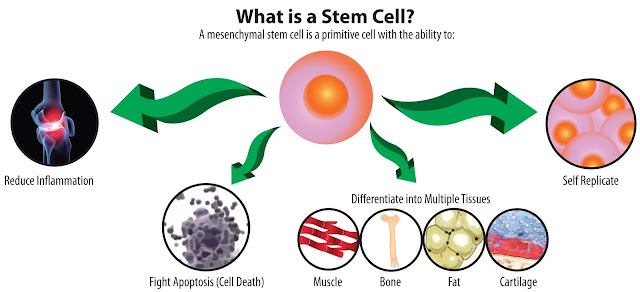At present, there are some stem cell therapies because only some of them have been extensively established as
safe and effective. Researchers are still developing some applications of stem
cells that can be used for an array of conditions. A maximum of them is under
clinical trials. But, it is still too early to decide if these trials are
active or not. The majority of stem cells are made in a lab and then Inoculated
or transfused into a patient’s body who might be suffering from pulmonary
hypertension.
While this type of Therapy is comparatively new, Various
developments are recurrently being made. As future events are made, the leeway
to treat diverse diseases endures being noted. There are various possibilities
in how these kinds of body cells can be used in the treatment of disease. As
research continues to be developed, we will unquestionably learn of more ways
in which these particular cells can be used.
Researchers have lately received
conditional approval for developing a new stem-cell-based treatment to overhaul
impairment to cornea called Hollar. All
these promising research outcomes have exhilarated parents to deposit their
umbilical cord blood and, therefore, the growth in umbilical-cord blood stem
cell banking. What are the illnesses that can be treated through stem cell
research? As per the UN, as many as 90 Disease and health disorders can be
managed via stem cells derived from the umbilical cord. But in theory, there is
no set boundary to these kinds of diseases or sicknesses that can be treated
using stem cell research.
Help assuage and even cure some
ailments. In the latest years, stem cell therapy has been emerging as the most
viable option to treat a multiplicity of degenerative diseases, which cannot be
treated with the assistance of conventional treatment choices.
Stem cell therapy is expensive.
Among the cheapest and most straight forward options is to harvest
adipose-derived stem cells (ADSCs) – those that exist in adult fat layers – and
re-deliver them to the patient. Unlike harvesting from bone marrow or teeth,
providers can feasibly remove fat, separate stem cells, then re-inject them
into a patient the same day. This approach is typically less expensive than
those that require more invasive procedures for harvesting. Because of its
practicality in terms of cost, it has become a common approach to stem cell
treatment.
Relatively “Simple” harvesting
still doesn’t translate to an affordable cost, although some are certainly more
affordable than others. For orthopedic conditions, the price of stem cell therapy is typically lower, Examples
of these types of medical conditions include:
- Arthritis
- Tennis elbow
- Cartilage defects
- Rotator cuff tendonitis
- Knee osteoarthritis
Note that these prices are typically out-of-pocket costs paid by the patient because most insurance companies will not cover them. They are considered experimental and unapproved by the FDA. It means patients needing stem cell treatment will need to use their savings.
Although fat is a frequently
utilized source for stem cells, it is also possible for physicians to use stem
cells from bone marrow. A small bone marrow sample extracted through a needle,
and blood is drawn from a vein in the arm. These samples processed in a
laboratory, and the cells it contains injected into an area of the body that
needs repair. On June 19, 2018, ACAP Health, a “leading provider in innovative,
clinical-based solutions, partnered with MedAcess to reduce high-cost
musculoskeletal surgeries.” ACAP Health is a national leader in employer
healthcare expense reduction. It is one of the first healthcare groups to
partner with a stem cell treatment group to support insurance coverage to
patients.
See Our International Patient Testimonials of Stem Cell Therapy in India For Various Treatable Disease - Click Here

No comments:
Post a Comment